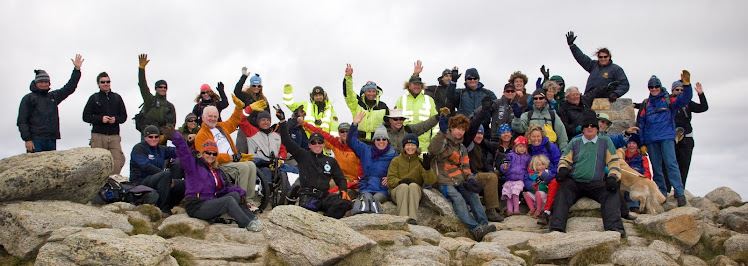As discussed in previous blog entries, the concept of quality accessible tourism experiences has gained little attention in the literature with most work concentrating on “access” as literally stopping at getting in the door. Access to the physical premise or alternative information provision should be the starting point for developing truly accessible destination experiences across including mobility, vision, hearing and cognitive dimensions of access. Understanding accessible destination experiences also needs to incorporate the level of support needs of the individual whether they are independent in their tourism interactions through to those who have very high support needs and require one on one assistance 24 hours a day. These conceptual foundations have been brought together in a forthcoming chapter that develops a more complex understanding of disability, tourism and accessible tourism (Darcy, Ambrose, Buhalis, & Schweinsberg, 2010).
Quality accessible tourism experiences were at the centre of a Sustainable Tourism Cooperative Research Centre project on Visitor Accessibility in Urban Centres (Darcy et al., 2008). The outcome of the project was the development of the Sydney for All Web portal that brought together good quality accessible tourism experiences across mobility, hearing, vision and cognitive dimensions of access across the continuum of support needs. Business 21C undertook a short video to encapsulate the philosophy of the project and to examine what makes for quality accessible tourism experiences. The video can be viewed at the following website http://www.business21c.com.au/2010/04/accessible-tourism-linking-demographic-change-and-social-sustainability-to-business-success . The work also encapsulated outdoor environments including national parks, Sydney Harbour and open space areas within the Sydney central business district including the Royal Botanic Gardens. A more detailed examination of presenting outdoor access information has been outlined in an article for the Australasian Parks and Leisure Journal that focused on the Sydney Harbour National Park North Head Look Out (Darcy, Cameron, Dwyer, & Taylor, 2008).
 |
| Photo 1: Stop Press - Sydney for All wins World Leisure Organisation's 2010 Innovation Prize IN |
The Sydney for All project has now been extended through a grant from the City of Sydney to include the Darling Harbour Tourism Precinct. This work has been carried out by Bruce Cameron, Director Easy Access Australia, and sought to provide a series of additional accessible destination experiences within this precinct. To this end, the following providers have been highlighted as providing high quality accessible destination experiences:
- The Chinese Gardens of Friendship;
- IMAX theatre;
- Australian National Maritime Museum; and
- Powerhouse Museum.
Within each of these providers, there are a series of mobility, vision, hearing and cognitive activities that can be undertaken across the continuum of support needs. Part of the project includes a built in research loop that both quantitatively and qualitatively assesses the experiences that individuals have in undertaking these destination experiences. Sydney for All has received a 2009 Vision Australia’s Making a Difference Award for W3C compliance for website accessibility for people with vision impairments or those who use screen readers, has received a highly commended award from Uniquest for innovative social media development and a University of Technology Sydney human rights award for social media development.
 |
| Photo 2: Bruce Cameron completing access audits for the Darling Harbour precinct (© 2010 Patty Mazza) |
References
Darcy, S., Ambrose, I., Buhalis, D., & Schweinsberg, S. (2010). Chapter 20 - A call towards universal approaches to accessible tourism. In D. Buhalis & S. Darcy (Eds.), Accessible Tourism: Concepts and Issues (pp. 320-340). Bristol, UK: Channel View Publications.
Darcy, S., Cameron, B., Dwyer, L., & Taylor, T. (2008). Research Note: Understanding accessible spaces and places: www.sydneyforall.com Web portal and the North Head Lookout Case Study. [refereed research note]. Australasian Parks and Leisure, 11(3 Spring), 28-34.
Darcy, S., Cameron, B., Dwyer, L., Taylor, T., Wong, E., & Thomson, A. (2008). Visitor accessibility in urban centres (pp. 75). Retrieved from http://www.crctourism.com.au/BookShop/BookDetail.aspx?d=626









